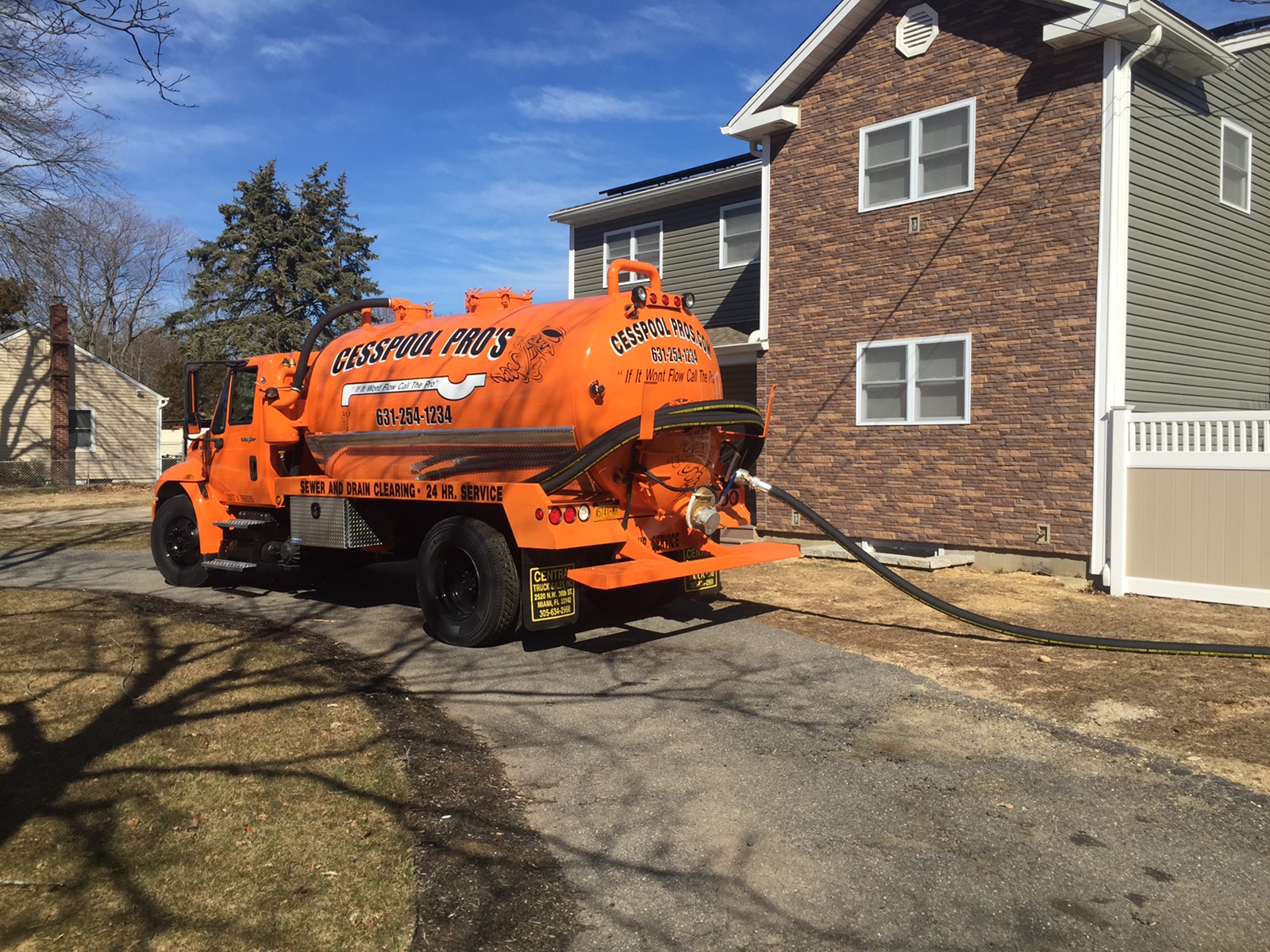Learn the Cesspool Basics

Everything you need to know about your septic system!
For decades, The Cesspool Pros have been servicing the Long Island, NY area. Whether your home or business is in need of a new septic system installation, standard maintenance, or are experiencing an emergency situation, our team of experienced and professional crew members are on-hand to assist with all of your cesspool needs.
Even though we’re here to handle all of the dirty work, it’s important to have a basic understanding of your septic system, how it works, and the services that it may require. Your septic system is comprised of two different components; the septic tank and the cesspool, which is the soil absorption area. The system runs in a four part process;
How does a septic system work?
1. Waste material from the home will travel to the septic tank.
2. Solids that are organic in nature will flow to the top of the tank, while solids that are inorganic in nature will settle at the bottom.
3. The septic tank contains naturally occurring bacteria that converts organic solids into liquid.
4. Solid and sludge layers are separated by clear liquid, which flows into the cesspool.
Servicing Your Cesspool;
1. Aerating the cesspool, with the addition of sulfuric acid chemicals, will allow the cesspool to drain water naturally into the earth.
2. The Hydro-Jetting process is a high-pressure cleansing that removes grease, mineral, hair and sludge build-up with your plumbing.
1. Is a large tank with holes or perforations, where digestion takes place.
2. Final stages of digestion and water filtration occur within the absorption bed, which surrounds the perforated tank.
3. Cesspools require strict regular maintenance, as they are difficult to restore once damaged.
What Causes a Septic System to Fail?
1. Can be constructed of pre-cast concrete, fiberglass or plastic.
2. Older tanks are sometimes made of steel, which has the tendency to break down over time.
3. Tanks should have at least a 250-gallon capacity for each person in the home.
4. Standard tank sizes include; 750, 1000, 1200 and 1500 gallons.
5. Newer, larger tanks are sometimes divided into two separate chambers to improve flow of waste.
While the entire septic system can seem confusing and complex, with regular structural check-ups and maintenance your home or business will be running smoothly. Don’t leave your septic system to chance, leave it to The Cesspool Pros!
